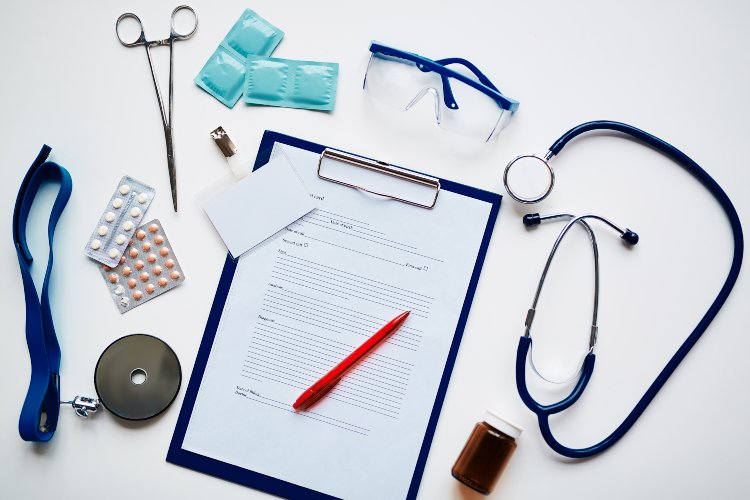Uses, Side Effects, and Treatment Options
What is Methadone?
Methadone is an opioid medication. Opioids are drugs synthetically made, and they are similar to opiates. Opiates are drugs derived from the opium poppy plant.
It is primarily used to help treat people with opiate use disorders addictions. It’s used as a medication to reduce cravings, making it an important tool in battling the opioid crisis in the United States.
A research study on opioid use in the United States found that in 2016:
- More than 2.1 million Americans had opioid abuse disorder
- Overdose deaths linked to opioids were five times higher in 2016 than in 1999
- Heroin use and heroin use disorders are on the rise as Americans substitute heroin for prescription opioids
- 626,000 Americans had a heroin use disorder
- More than 15,000 people in the US died of a heroin overdose
How is methadone used?
This medication has two main uses:
- To relieve severe pain
- To prevent withdrawal symptoms in people with opioid/opiate use disorder
Street Names
According to the DEA, the street names for methadone include:1
- Amidone
- Chocolate Chip Cookies
- Fizzies
- Maria
- Pastora
- Salvia
- Water
FAQ
Is methadone Addictive?
All opioids have the potential for addiction. What makes methadone a less likely candidate is that it is a long-acting opioid. It does not give the quick and intense high like other opioids do, so there is little motivation to abuse methadone.
Class of Drug
It’s in the drug class known as opioid analgesic narcotics. These types of drugs work to change how your body experiences and responds to pain.
Where is methadone on the schedule of drugs?
This medication is classified as a Schedule II drug in the United States. Schedule II substances have a high potential for abuse and dependence. Other Schedule II drugs include meperidine (Demerol®), oxycodone (OxyContin®), fentanyl, morphine, codeine and opium.2
Is methadone Safe?
It’s safe as long as it is taken as prescribed by a healthcare professional. If it is misused or abused, it can become as dangerous as any other opioid or opiate drug.
Effects
What are the short-term effects of methadone?
Serious or fatal breathing problems can develop after taking this drug, especially during the first 24 to 72 hours, or any time the dosage is increased. If you experience any breathing problems, seek medical care right away.
Other short-term side effects include:3
- Headache
- Mood changes
- Flushing
- Stomach pain
- Dry mouth
- Dry mouth
- Sore tongue
- Urination problems
- Vision problems
- Sleep disturbances
- Weight gain
What are the long-term effects of methadone?
The long-term side effects of taking this drug can include:3
- Seizures
- Rash
- Swelling
- Throat hoarsness
- Breathing or swallowing problems
- Drowsiness
- Agitation
- Confusion
- Hallucinations
- Fever
- Sweating
- Rapid heartbeat
- Shivers
- Muscle tension
- Lost of coordination
- Nausea/vomiting
- Diarrhea
- Weakness
- Dizziness
- Erectile dysfunction
- Irregular menstrual periods
- Decreased libido
Can you overdose on methadone?
Overdose is possible on this drug if a larger dose than prescribed is taken or if the drug is recreationally. The symptoms of overdose include:4
- Slow or shallow breathing
- Small, pinpoint pupils
- Extreme drowsiness
- Cold, clammy skin
- Person “turns blue”
- Loss of consciousness
- Coma
- Limp muscles
How to Quit
How to stop using methadone
If you are in a methadone program and want to stop using it, talk to your doctor about the best ways to taper down until you are off the drug.
If you are using the drug recreationally, a treatment program is needed to help you stop using the drug properly.
What is withdrawal like?
Withdrawal from this drug is hard and can be dangerous – just as it is with any opioid. A medically supervised detox helps avoid withdrawal symptoms, which can include:
Early withdrawal signs:
- Runny nose
- Sweating
- Muscle aches
- Agitation
- Anxiety
- Insomnia
- Yawning
Later withdrawal signs:
- Goosebumps
- Diarrhea
- Abdominal cramping
- Dilated pupils
- Vomiting
- Nausea
What are my treatment options?
After a medically supervised detox, medications and counseling are needed for effective recovery. You can attend treatment on an inpatient (residential) or outpatient basis.
Opioid addiction is a dangerous and sometimes deadly condition. If you or a loved one have problems with any opioid, reach out for help right away. Successful recovery is possible.
Resources





